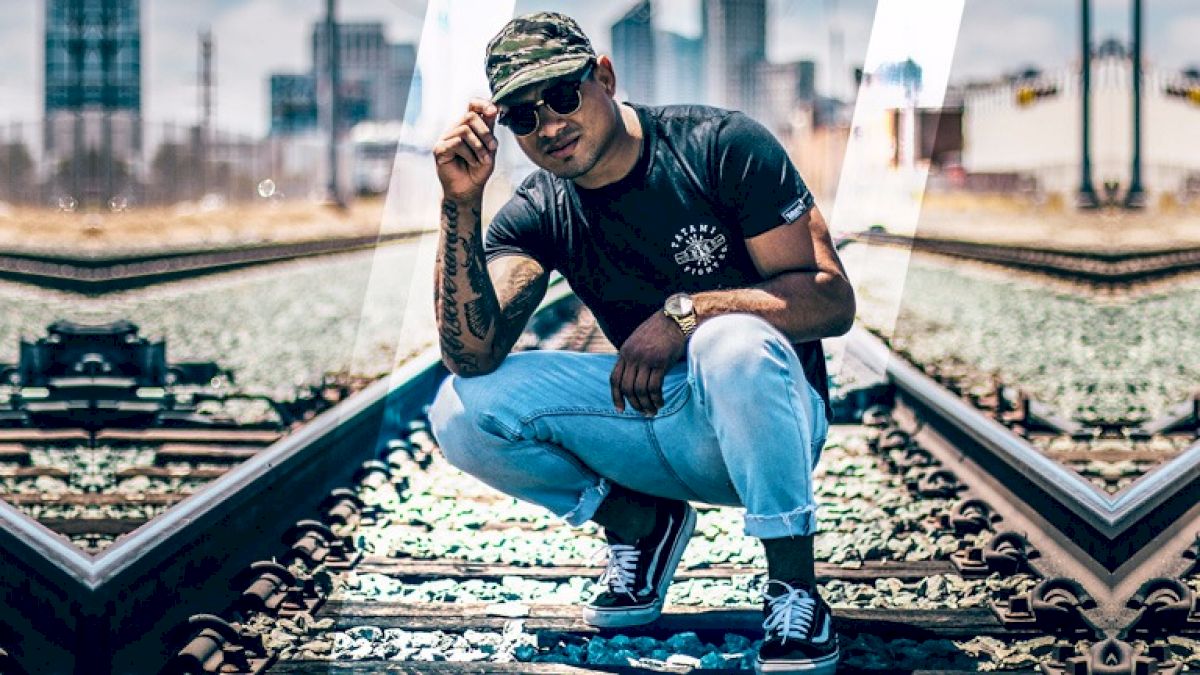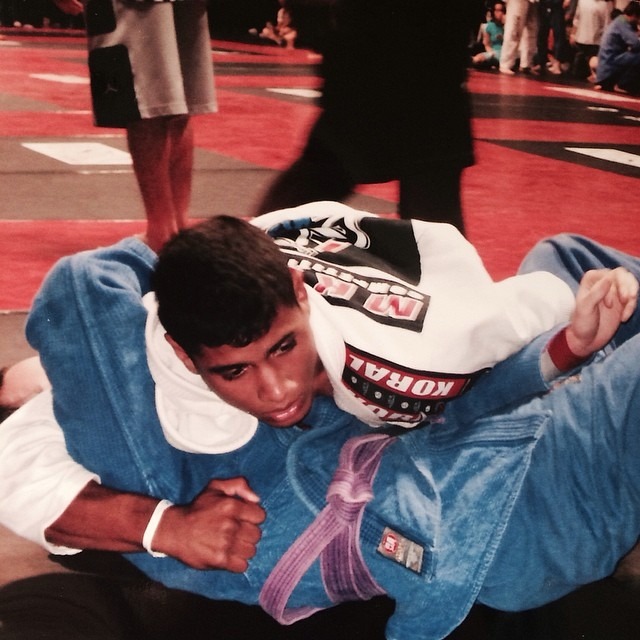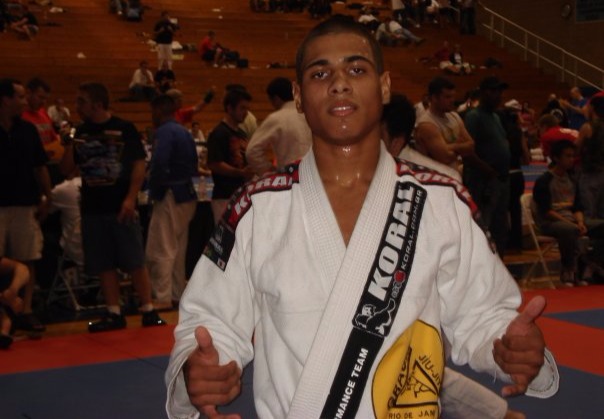JT Torres, Jiu-Jitsu & The American Dream, Part 2: The Hustle And Grind
JT Torres, Jiu-Jitsu & The American Dream, Part 2: The Hustle And Grind
Like in any divorce, it wasn't easy on anyone in the Torres family, but JT Torres credits jiu-jitsu for helping him through the chaos of the legal battles.

In Part I of "Jiu-Jitsu And The American Dream" we looked back on JT Torres' upbringing and early beginnings in jiu-jitsu. Keep reading to find out how he turned a passion into a fledgling career.
PART II
Like in any divorce, it wasn't easy on anyone in the Torres family, but JT Torres credits jiu-jitsu for helping him through the chaos of the legal battles.
"So my dad gives me a call one day, and he goes 'Hey, you know, you're supposed to come up this weekend. I'll come pick you up, this and that. Look, there's a jiu-jitsu academy down the street from my apartment.'"

Photo: Luis Lopez
The academy was Performance BJJ and alongside the schedule on the door was a description of the instructor: Louis Vintaloro, BJJ black belt under Royler Gracie. Torres was ecstatic. He had seen only one other black belt in his entire life, and that had been Royce Gracie. His karate instructor Peter Clemente was only a blue belt in jiu-jitsu at the time Torres started training and received his purple belt the same day Torres was promoted to blue.
 His father, committed to see JT's happiness, arranged to pick him up more often, making the trip in his beat-up Toyota Camry, even in the middle of a snowstorm and after a long shift working at the hospital. At age 17, Torres started driving himself.
His father, committed to see JT's happiness, arranged to pick him up more often, making the trip in his beat-up Toyota Camry, even in the middle of a snowstorm and after a long shift working at the hospital. At age 17, Torres started driving himself.
Before long he was driving to New Jersey two to three times a week while still going to high school and working on the side.
"At a young age, I was already on my hustle, on my grind, paying for my own gas, paying for my own fees," Torres said.
Torres received both his purple belt (at age 16) and his brown belt (at age 17, just a day before he turned 18) from Vintaloro. When Torres finished high school, he moved in with his father and started working at the hospital, training as much as possible in his free time.
At the urging of his parents, he signed up for classes at Rockland Community College -- paid for out of his own pocket -- but his heart wasn't in it. While he no longer practiced kimuras on his jacket during class, all he could think about was jiu-jitsu.

A young JT Torres, back when he still trained with Gracie Humaita. Photo: personal archive.
He began teaching privates and had a small clientele of lower belts. Teaching two to three privates per week at $80 per hour was like "millions of dollars" for Torres at the time.
"I was like, 'Whoa, I'm killing it right now,'" he said.
The jiu-jitsu community was experiencing a sudden growth. Less than five years prior, it was almost unheard of to make a living from jiu-jitsu. Now, it was a real possibility.
Just as Torres anticipated, when he dropped out of college, his parents were livid. The question they repeated, over and over, was: "What are you going to do?"
JT's answer: "I don't know, but I'm going to figure it out."
Part III coming Wednesday...
PART II
Like in any divorce, it wasn't easy on anyone in the Torres family, but JT Torres credits jiu-jitsu for helping him through the chaos of the legal battles.
I always thank God for jiu-jitsu, because jiu-jitsu really kept me safe, it kept me in a good spot in my mind. Jiu-jitsu teaches you a lot of things -- you learn tons of things on the mat, but you learn a lot more off the mats. Jiu-jitsu really helped me keep my cool during that time. But things happen for a reason, and you got to kind of roll with the flow of things.With the pains of the divorce came an unexpected opportunity for JT. His father, William Torres, moved out of the family house and to Fair Lawn, New Jersey, about 35 minutes away. For JT, a high school kid with no car and no license, it might as well have been on the other side of the country. He went from seeing his father every day to once every two weeks.
"So my dad gives me a call one day, and he goes 'Hey, you know, you're supposed to come up this weekend. I'll come pick you up, this and that. Look, there's a jiu-jitsu academy down the street from my apartment.'"

The academy was Performance BJJ and alongside the schedule on the door was a description of the instructor: Louis Vintaloro, BJJ black belt under Royler Gracie. Torres was ecstatic. He had seen only one other black belt in his entire life, and that had been Royce Gracie. His karate instructor Peter Clemente was only a blue belt in jiu-jitsu at the time Torres started training and received his purple belt the same day Torres was promoted to blue.
I was blown away when I first went into that academy, because when I walked into that room there was a sea of blue belts, purple belts, a couple brown belts, and Louis himself who was the black belt there. I was like, 'Whoa, this is like jiu-jitsu heaven.'Because Torres was only in Fair Lawn every other week, he arranged to pay just a mat fee each time he came in. It was $20. After the divorce, money was tight for the Torres family, so JT started working -- as a kid's karate instructor, at an ice cream shop, and mostly at McDonalds -- to pay for his passion.
 His father, committed to see JT's happiness, arranged to pick him up more often, making the trip in his beat-up Toyota Camry, even in the middle of a snowstorm and after a long shift working at the hospital. At age 17, Torres started driving himself.
His father, committed to see JT's happiness, arranged to pick him up more often, making the trip in his beat-up Toyota Camry, even in the middle of a snowstorm and after a long shift working at the hospital. At age 17, Torres started driving himself. Before long he was driving to New Jersey two to three times a week while still going to high school and working on the side.
"At a young age, I was already on my hustle, on my grind, paying for my own gas, paying for my own fees," Torres said.
Torres received both his purple belt (at age 16) and his brown belt (at age 17, just a day before he turned 18) from Vintaloro. When Torres finished high school, he moved in with his father and started working at the hospital, training as much as possible in his free time.
At the urging of his parents, he signed up for classes at Rockland Community College -- paid for out of his own pocket -- but his heart wasn't in it. While he no longer practiced kimuras on his jacket during class, all he could think about was jiu-jitsu.
I was just flunking the classes, because my mind wasn't in it. My mind was 100 percent on jiu-jitsu. I said to myself, 'My parents want me to go to school, want me to get a degree, but I'm just wasting my money right now. This is not what I want to do. I want to do jiu-jitsu.'It was a difficult decision to make.

He began teaching privates and had a small clientele of lower belts. Teaching two to three privates per week at $80 per hour was like "millions of dollars" for Torres at the time.
"I was like, 'Whoa, I'm killing it right now,'" he said.
The jiu-jitsu community was experiencing a sudden growth. Less than five years prior, it was almost unheard of to make a living from jiu-jitsu. Now, it was a real possibility.
Just as Torres anticipated, when he dropped out of college, his parents were livid. The question they repeated, over and over, was: "What are you going to do?"
JT's answer: "I don't know, but I'm going to figure it out."
Part III coming Wednesday...